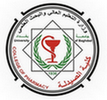The Faculty of Pharmacy discussed the Master’s Degree thesis, tagged “Evaluation of the effect of Ursodeoxycholic Acid on Arthritis induced in Rat models in comparison with Dexamethasone and Diclofenac sodium”. By Yamama Raad Abduljaleeland the supervisor, Assist. Prof. Dr. Ahmed Hamed Jwaid in the Department of pharmacology and toxicology on Tuesday 17/8/2023 .This study is designed to investigate the evaluation of the anti-arthritic effect of Ursodeoxycholic Acid (UDCA) in Complete Freund’s Adjuvant CFA-induced rheumatoid arthritis in a rat model in comparison with dexamethasone and diclofenac by evaluating Paw edema, arthritic score, and, in addition, the assessment of the hematological parameters ( Red blood cell, White blood cell, and Erythrocyte sedimentation rate), serum tumor necrosis factor-α, serum interleukin-17, serum Rheumatoid factor, serum reduced glutathione levels, and serum malondialdehyde levels. In addition, radiological changes and a histological examination of the rat’s ankle joint sections were also carried out. Data analysis showed that UDCA administration significantly reduced paw edema size close to the effect of diclofenac and decreased tumor necrosis factor-alpha (TNF-α), lnterleukin-17 Lnterleukin-17 “IL-17”, and rheumatoid factor( RF) release close to the effect of dexamethasone and diclofenac compared to the CFA-induced non-treated group. The arthritic score and paw edema size were significantly smaller in the UDCA-treated group, close to the effect of diclofenac, in comparison to the CFA-induced non-treated group. Body weight was significantly improved in the UDCA-treated group, close to the effect of the diclofenac group, indicating a beneficial effect. Hematological parameters showed improvement, with a decrease in “white blood cell count and erythrocyte sedimentation rate” close to the effect of diclofenac and an increase in “red blood cell count” in the UDCA-treated group close to the effect of dexamethasone and diclofenac in comparison to the CFA-induced non-treated group. Significant increases in the activity of the anti-oxidant parameter reduced glutathione, and a significant reduction in malondialdehyde levels was close to the effect of dexamethasone and diclofenac in comparison to the CFA-induced non-treated group. The radiological change showed UDCA demonstrated the best outcomes, with the least bone damage and the least affected joint compared to the CFA-induced non-treated group. Histopathological examination showed marked improvements in ankle joint sections of rats treated with UDCA, close to the effect of diclofenac. Based on these results, UDCA showed an anti-arthritic effect against CFA-induced rheumatoid arthritis that can be attributed to its anti-inflammatory properties close to the diclofenac effect and its antioxidant activity close to the dexamethasone and diclofenac effects.








